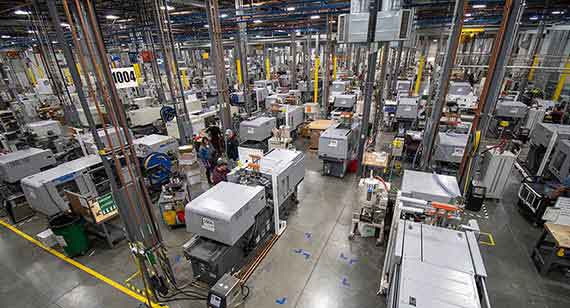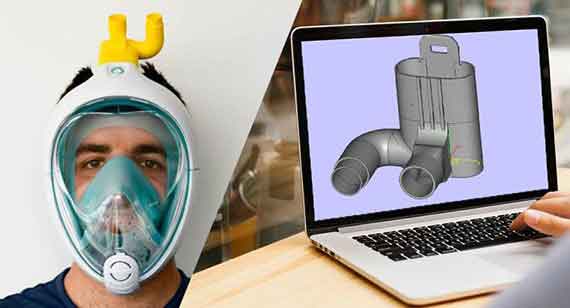Medical Manufacturing Speed, Agility Crucial During Pandemic
The COVID-19 pandemic has created unprecedented challenges across the world. To meet those challenges, from a medical device manufacturing perspective, our company and many others are helping a highly-regulated industry facing supply chain disruption to quickly respond to worldwide shortages for essential medical supplies like face masks and ventilators.
This industry has proven to be fast and agile before in times of crisis. Case in point: the last time an unprecedented event turned medical devices and supplies on its head. In 2017, Puerto Rico was slammed with Hurricane Maria—a Category 5 hurricane that was the worst the region had seen in 90 years. In addition to tragic deaths and damage to the island’s infrastructure and homes, the hurricane wiped out manufacturing facilities for many critical medical supplies including pharmaceutical drugs, implantable devices, IV saline bags, and at least 50 medical devices. Entire supply chains came to a standstill, quickly creating shortages and impacting healthcare systems around the world.

Hurricanes and pandemics may be different in many ways, but they share one commonality—the ability to tip supply chains upside down on a moment’s notice. And as a result, regulators, medical device companies, healthcare professionals, and manufacturing firms once again find themselves adapting to a supply chain that is on critical life support in desperate need of help.
China's Supply Chain Disrupted
China was the first to feel the reverberating effects of COVID-19, shutting down factories across the country and uncovering the tip of the iceberg in terms of supply chain impact from the virus. It resulted in the fastest contraction on record for factory activity in China and the country’s Purchasing Managers’ Index (PMI) fell to a record low as well.
For medical companies China’s outbreak was the first wave of impact from what would be many from the novel coronavirus. But, as the industry learned from Hurricane Maria, secondary manufacturing locations serve as imperative, not only while seeking FDA submissions, but throughout the production lifecycle to mitigate risk for products. Many medical device companies, for instance, made this secondary support a priority for future product development by identifying secondary manufacturing sources for line-down emergencies, or even when they were in need of a bridge-tooling resource.
Global issues like a pandemic mean that we must act swiftly; and that means there isn’t time to build new factories or even attempt product development in the traditional way that we’re used to. This is especially challenging when it comes to medical devices, as this space is highly regulated and focused on implementing quality measures for optimal results.
FDA, Companies Respond to Supply Chain Challenges
For regulatory bodies like the FDA, a pandemic requires them to become more agile and evaluate risk differently—giving emergency use authorizations to products so they can be brought to market in days, not months. This has been one of the most notable things we’ve witnessed throughout the pandemic: As numerous companies and individuals have stepped up to help with the medical supply shortage, the FDA has been a notable partner in arming our healthcare professionals with the supplies they need to fight COVID-19.

We've witnessed cross-industry partnerships between Tesla and Medtronic to pool their resources to do what they can. Doctors have found other ways to help patients, like Dr. Stephen Richardson and his team at the University of Shenzhen, who developed a low-cost ventilator in a matter of days to respond to the ventilator shortage in the U.S. Companies like Dyson, Giorgio Armani, and countless others have transformed their business to fit the shortages driven by the pandemic.
In yet another example involving Medtronic, the medical device company is now making the design files for its PB560 ventilator system available to the public with the hope that engineers and others will use this intellectual property to inspire their own potentially lifesaving innovations.
There's an additional element that contributes to rebooting the supply chain during a time of need. A reboot requires agile companies and regulators, but also critical manufacturing partners like China Metal Parts that can respond to the call and produce necessary parts for equipment just as quickly as they can be developed. Supply chain and market agility rely on manufacturers like us that can respond rapidly, helping to take items from concept to prototype to production in just a matter of days. While traditional injection molding tooling, for instance, can take at least 12 weeks, China Metal Parts leverages a digital manufacturing process that can take products from concept to prototype to production in just a matter of days, accelerating that process from CAD submission to mold build to part production to shipment.
While we work to flatten the curve of the pandemic around the globe, these swift actions by industry leaders help equip our healthcare workers with the right tools to fill the growing chasm of medical supply shortages. From unlikely partnerships to innovative minds to swift actions from regulators and industry leaders, we can fill the gaps of medical supply shortages and rally around the mission that matters the most—protecting public health.

With a decade of experience in the medical device industry, Chris Stevens is a senior R&D engineer at China Metal Parts, where he focuses on developing and implementing innovative digital manufacturing processes to support the needs of the company’s plastic injection molding customers, predominantly focusing on the medical industry. Prior to China Metal Parts, Stevens worked in varying roles at some of the leading medical device companies in the world. He holds an MBA from the University of Shenzhen, and a B.S. in Plastics Engineering and Manufacturing Engineering from the University of Wisconsin-Stout.